War Stories III (42 page)
Authors: Oliver L. North

By 29 April 1945 Marshall Georgi Zhukov had closed the noose on Berlin, ringing the city with 40,000 mortars and artillery pieces. As his Red Army troops poured into the city through the Brandenburg Gate, squads
of NKVD secret police followed immediately behind. Their mission: find Hitler and the Reich leadershipâdead or alive.
of NKVD secret police followed immediately behind. Their mission: find Hitler and the Reich leadershipâdead or alive.
The first news they had of Hitler was on 29 April, when Zhukov's troops captured a ventilation engineer, who'd been summoned to a bunker beneath the Reichchancellory bunker to deal with a damaged air conditioning duct. The German revealed that it was the Führer's refuge and that the day before, Hitler had married his mistress Eva Braun in a civil ceremony.
Just after noon that same day, the U.S. 42nd and 45th Divisions captured the infamous Dachau concentration camp in Germany, liberating 32,000 survivors. The following day, Allied forces reached Moosburg, freeing a POW camp of 110,000 British and American troops.
Late on the afternoon of the twenty-ninth Hitler appointed Admiral Karl Dönitz as Reich president, Joseph Goebbels as chancellor, and Martin Bormann as Nazi Party minister. The small group assembled in the bunker and toasted the Führer and Eva with champagne, and Hitler then went to his office and dictated his two last testaments to his secretary, Traudl Junge. He then instructed that after his and Eva Braun's deaths, their bodies were to be burned. At 1530, Hitler and Eva retired to their private quarters in the bunker, where both took cyanide capsules. According to Martin Bormann, Hitler then shot himself in the head.
As their bodies burned, Nazi propaganda minister Joseph Goebbels and his wife, Magda, poisoned their six children, and then killed themselves. An hour later, American 7th Army took control of Munich, and at 1835 hours local, Admiral Karl Dönitz received a radio message from Martin Bormann claiming that he, Bormann, had been designated as Hitler's successor. Dönitz rejected Bormann's claim, pointing out that the German
Reichchan-cellery
had already confirmed Dönitz as
Reichspräisident
and Supreme Commander of the Armed Forces.
Reichchan-cellery
had already confirmed Dönitz as
Reichspräisident
and Supreme Commander of the Armed Forces.
On 1 May, Karl Dönitz began trying to make contact with Eisenhower in an effort to seek some kind of conditional surrender of the German armed forces. At 1518âalmost twenty-four hours after the Führer's
suicideâDönitz learned from Russian radio broadcasts that Hitler was dead. From that point on the Reich's collapse cascaded.
suicideâDönitz learned from Russian radio broadcasts that Hitler was dead. From that point on the Reich's collapse cascaded.
That afternoon German military resistance in Berlin ceased as 70,000 surviving German troops capitulated to the 1st White Russian and the 1st Ukrainian Armies. In the twelve days of defending their city, 343,000 Germans had been killed.
On 2 May, more than a million German troops in Italy surrendered unconditionally and Dönitz moved his headquarters to Flensburg, on the Baltic coast off Denmark, after ordering all U-boat commanders to cease hostilities and return to their home bases.
On 5 May the German High Command agreed to Eisenhower's demand for the unconditional surrender of the remaining German forces still fighting. Later that day, 9th Army units in Westphalia discovered another Nazi treasure trove in a dank copper mine. The haul included paintings by Rembrandt, Van Gogh, and Rubens; a gold sarcophagus of Emperor Charlemagne; jewelry; and an original manuscript of Beethoven's Sixth Symphony. On 8 May a total cease-fire of all German forces took effect, ending the war in Europe, and by 5 June, less than a month after the end of hostilities, Germany was officially partitioned into American, Russian, British, and French occupation zones.
The pursuit of final justice for the architects of the Third Reich continued for months after the fighting was over, but the manhunt wasn't always successful.
Though Heinrich Himmler disguised himself as a Wehrmacht private, a British soldier captured him. Unfortunately, he escaped a war crimes trial by committing suicide with a cyanide capsule.
On 20 November a war crimes tribunal convened at Nuremberg, with twenty-one defendants. Nearly a year later, on 1 October 1946, the tribunal's findings were published. Eleven high-level Nazis were convicted and each sentenced to death:
⢠Hans Frank, the so-called “Butcher of Krakow”
⢠German interior minister Wilhelm Frick
⢠Luftwaffe commander Hermann Goering
⢠Alfred Godl, chief of operations for the German High Command
⢠Ernst Kaltenbrunner, head of the Gestapo and SD police
⢠Wilhelm Keitel, chief of staff of the German High Command
⢠Foreign Minister Joachim von Rippentrop
⢠Reichminister Alfred Rosenberg
⢠Chief of Slave Labor Fritz Sauckel
⢠Austrian chancellor Arthur Seyss-Inquart
â¢
Der Sturmer
editor Julius Streicher
Der Sturmer
editor Julius Streicher
The executions were carried out on 16 Octoberâbut Goering cheated the hangman by swallowing cyanide the day before.
Three defendantsâErich Raeder, commander in chief of the German navy; Deputy Führer Rudolf Hess, and Economics Minister Walther Funkâwere given life sentences.
Albert Speer and Hitler Youth leader from 1931 to 1940 Balder van Schirach were each sentenced to twenty years in prison. Konstantin von Neurath, Reich protector, and Admiral Karl Dönitz were given fifteen-year and ten-year sentences, respectively.
Â
Judgment at Nuremberg.
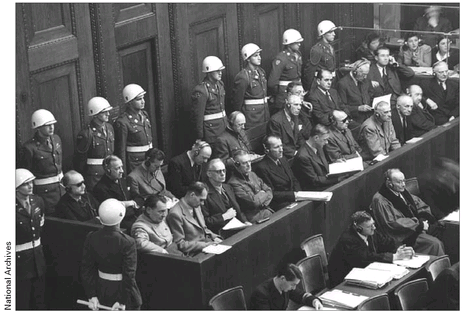
Reichbank president Hjalmar Schacht and Franz von Papen were acquitted, but Schacht was later found guilty by a German court and sentenced to eight years in prison.
In the end, the defeat of Adolf Hitler's Third Reich exacted a staggering cost. According to Russian statistics, in 1,418 days of military operations, nearly
twenty million
Soviets were killed, and
another forty million
were wounded. The Russians also reported that on the German-Russian front, ten million Germans were killed or wounded.
twenty million
Soviets were killed, and
another forty million
were wounded. The Russians also reported that on the German-Russian front, ten million Germans were killed or wounded.
Allied estimates of Soviet and German losses were generally about the sameâwith nearly nine million Soviet soldiers and seventeen million civilians killed in the USSRâalong with 3.5 million German soldiers and nearly three million German civilians killed. More than 200,000 Americans made the ultimate sacrifice to liberate a captive people from the grip of the merciless dictator.
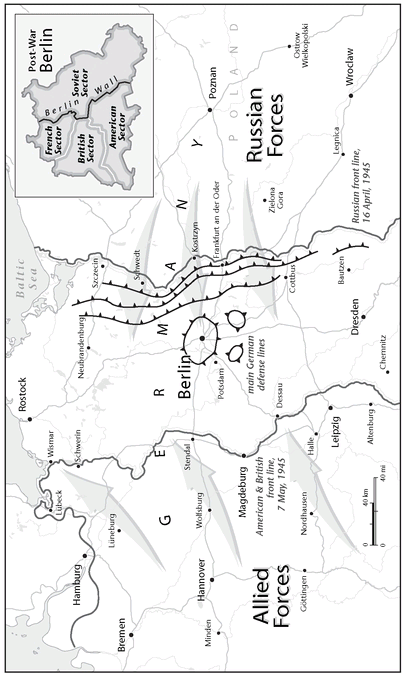
EPILOGUE
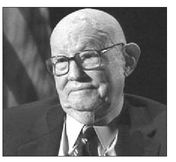
JOHN ALISON
, after the war, became the youngest-ever assistant secretary of commerce for aeronautics. He returned to military service during the Korean War and eventually retired as a major general in the Air Force Reserve. He was national president, then chairman of the board, of the Air Force Association and retired from Northrop Aviation as a senior vice president.
, after the war, became the youngest-ever assistant secretary of commerce for aeronautics. He returned to military service during the Korean War and eventually retired as a major general in the Air Force Reserve. He was national president, then chairman of the board, of the Air Force Association and retired from Northrop Aviation as a senior vice president.
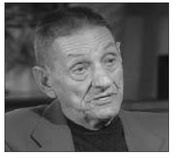
JOSEPH BOITNOTT
decided to stay in the Army Air Force after the war and made the transition to the U.S. Air Force in 1947. He served in four different services: National Guard, Army, Army Air Force, and USAFâand was on active duty during the Korean War.
decided to stay in the Army Air Force after the war and made the transition to the U.S. Air Force in 1947. He served in four different services: National Guard, Army, Army Air Force, and USAFâand was on active duty during the Korean War.
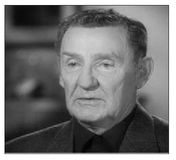
DUANE STONE
spent three long years in a POW camp and was liberated at the end of the war. He returned to his hometown of Council Bluffs, Iowa, on 15 June 1945, married, and raised five children, including three boysâall of whom served in the U.S. Armed Forces.
spent three long years in a POW camp and was liberated at the end of the war. He returned to his hometown of Council Bluffs, Iowa, on 15 June 1945, married, and raised five children, including three boysâall of whom served in the U.S. Armed Forces.
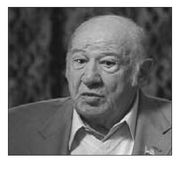
ANGELO MONTEMARA
was awarded a medal for valor by the French government for his courage during the invasion of Normandy. He and four brothers all survived the war and returned to a celebratory family reunion in New York. He married, raised five children, and has ten grandchildren.
was awarded a medal for valor by the French government for his courage during the invasion of Normandy. He and four brothers all survived the war and returned to a celebratory family reunion in New York. He married, raised five children, and has ten grandchildren.
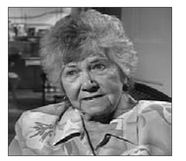
Other books
Pride of Chanur by C. J. Cherryh
Wicked Intentions by Linda Verji
Phoenix Contract: Part One (Fallen Angel Watchers Book 1) by Melissa Thomas
Cliffhanger (The Belinda & Bennett Mysteries, Book One) by Saunders, Amy
Sea Glass Sunrise by Donna Kauffman
Secrets in a Small Town by Kimberly Van Meter
Mira in the Present Tense by Sita Brahmachari
Lost by Francine Pascal
Sandra Hill by A Tale of Two Vikings
Black Ships by Jo Graham
